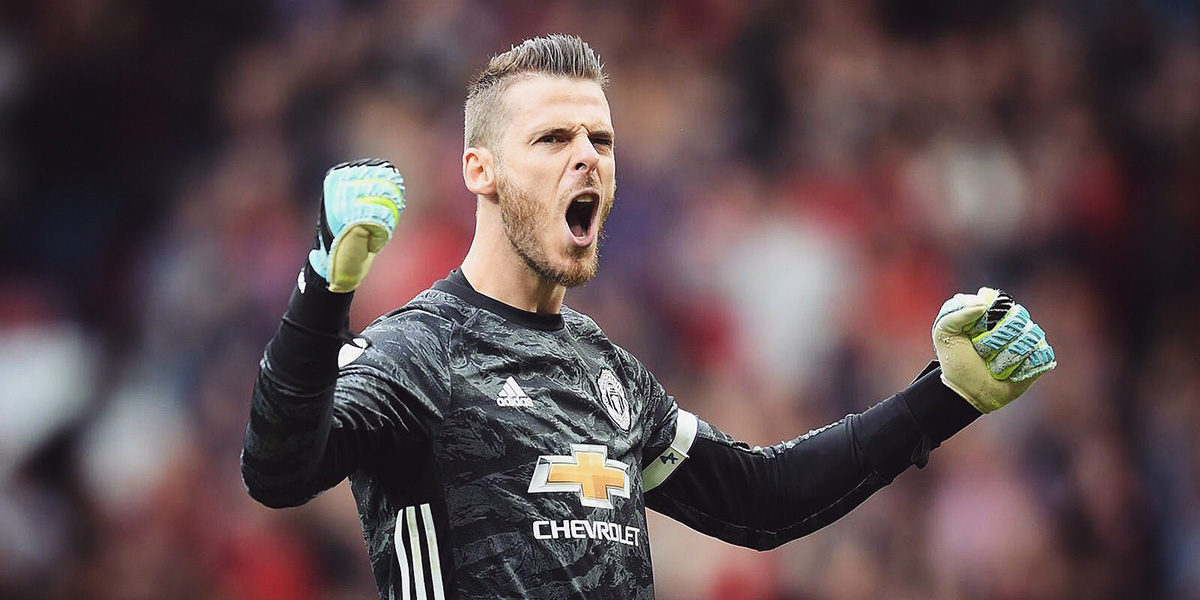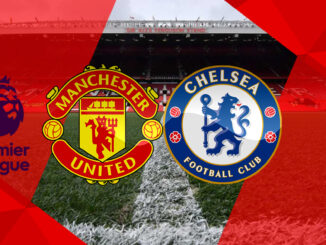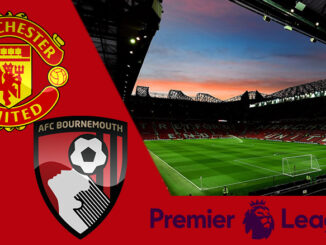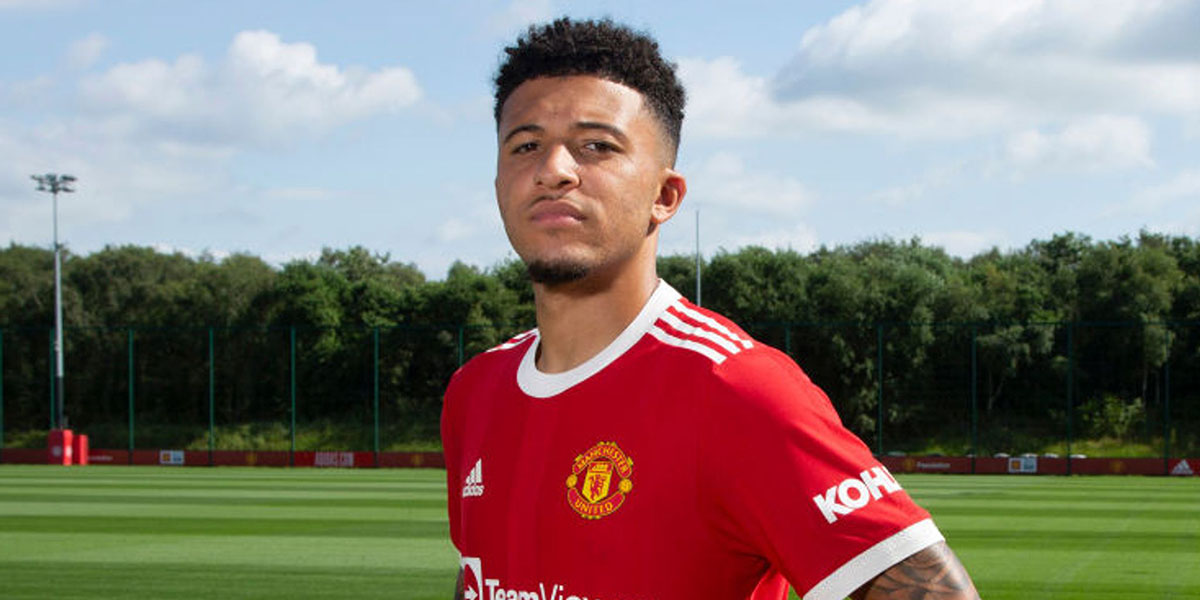
Following Jadon Sancho’s high-profile move to Manchester United, this article explores the most famous players to have also played for both Manchester United and Manchester City, analysing their time at both clubs and commenting on the success of each period.
It would be of great difficulty to mention every player to have competed for both clubs and even more so to cover them all in considerable detail. Instead, this article will focus on the most significant and memorable individuals to represent both sides of Manchester.
The First Manchester Men
William Douglas and Robert Milarvie became the first men to play for both Manchester teams, representing both sides of the city towards the end of the 19th century. Douglas was a Scottish goalkeeper who made 36 appearances for City, at this point known as Ardwick A.F.C, between 1890 and 94. In 1984, he transferred to Manchester United, or Newton Heath L.Y.R, and played 57 times for the Reds up until a move to Derby County in 1896. Scottish forward Robert Milarvie also turned out for both Manchester clubs.
After being signed from Derby, Milarvie played 22 times for Newton Heath in just one season, the 1890/91 campaign. He then transferred to Ardwick, where he played 69 times between 1891 and 1896. Notably, Milarvie was at the club when Ardwick transformed into the now universally-known Manchester City, in 1984/85. While neither Douglas or Milarvie played a great number of games for their Manchester teams, or are even well-known by the average fan of either club, they have both earned mythical status as two of the first players to wear both the famous red and blue of Manchester.
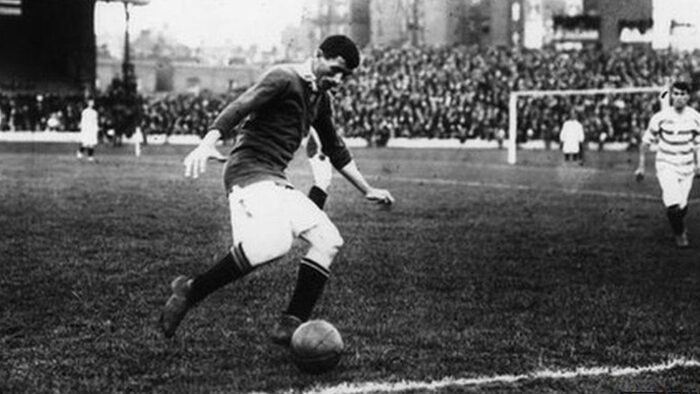
Perhaps the most famous player to play for both sides of Manchester was Welsh international, Billy Meredith. As well as earning 48 caps for his country, the ‘Welsh Wizard’ had two spells at City and a successful stint at United. A truly iconic figure for both clubs, Meredith played for City from 1894 to 1906 and then again from 1921 to 1924. In total he made over 300 league appearances for the Blues, scoring 129 goals. With City, the Welshman won the 1898/99 Second Division and the FA Cup in 1904, the club’s first major trophy. Meredith captained the City side in the final and scored the winning goal, in a 1-0 victory versus Bolton.
In the summer of 1906, the phenomenal winger moved to Manchester United, becoming the highest profile figure to represent both clubs. Over 15 years, Meredith made 303 league appearances at Old Trafford and bagged 35 goals. With United, he won two first division titles, in 1907/08 and 1910/11, as well as another FA Cup in 1909. Meredith returned to Manchester City in 1921, aged 47, and played 32 more games before retiring in 1924. He remains the oldest player to play for each of Manchester United, City and Wales. With over 300 appearances and multiple trophies at both clubs, Meredith is arguably the individual who saw the most success at both Manchester sides. He remains an iconic figure to both clubs to this day, playing a vital role in both clubs’ early successes.
Playing in the same period as Meredith was Scottish forward, Sandy Turnbull. Turnbull was a player for Manchester City between 1902 and 1906. He had an impressive goal scoring record, scoring over 50 goals in just over 100 league appearances for the Blues. Turnbull was part of the same team as Meredith that helped secure City’s first FA Cup win in 1904. He then made the switch to United in 1906, where he spent nine years a Red and, along with Meredith, won two titles and an FA Cup. Turnbull played over 200 games for the Red Devils, scoring 90 goals during his time at the club. Sandy Turnbull had a remarkable goals-to-game ratio for both sides and, like Meredith was instrumental in the early achievements of both clubs.
In 1906, Manchester City became embroiled in a scandal over finances and players’ wages. As a result, the club were forced into selling several of their top players. Along with Billy Meredith and Sandy Turnbull, Manchester United also purchased two Englishmen, Herbert Burgess and Jimmy Bannister, from their local rivals.

The Post-War Period
When football returned following its hiatus due to the global turmoil of two world wars, several more players graced the fields of both Old Trafford and Maine Road. One such figure was centre-forward Brian Kidd. Kidd enjoyed a successful career with Man United, playing 203 times for the Red Devils and scoring 52 league goals. Memorably, Kidd scored in United’s 1968 European Cup final win over Benfica. After a subsequent spell with Arsenal, Kidd moved to City in the summer of 1976. During three seasons at Maine Road, Kidd managed 44 goals from 98 league appearances, before leaving for Everton in 1979. Following his playing career, Brian Kidd has gone on to enjoy great success as a coach. After brief spells in charge of Barrow and Preston North End, Kidd was appointed as a youth team coach for Manchester United by Sir Alex Ferguson in 1988.
Kidd was influential in helping mould and encourage a group of young talented players at United, such as Ryan Giggs, who became vital to the Red Devils’ success in the 90s. Kidd was promoted to assistant manager and occupied the role from 1991 to 1998. He famously ran on to the pitch and dropped to his knees to celebrate Steve Bruce’s second goal in a win over Sheffield United, which was pivotal in helping United to secure the 1992/93 title. During Kidd’s time as a coach at United, the team won four Premier League titles, three FA Cups and one League Cup. Kidd returned to City in 2009 as a technical development manager, before being appointed as assistant manager to Roberto Mancini in December 2009.
Kidd held this position under successive managers Manuel Pellegrini and Pep Guardiola, before leaving the role at the end of the 2020/21 season. While part of the coaching set-up at City, Kidd saw the team achieve five Premier League titles, two FA Cups and six League Cups. As a player, Kidd played more times for Manchester United, with the highlight undoubtedly the 1968 European Cup victory. He went on to experience immense coaching success at both clubs, holding the role of assistant manager to two of the greatest modern managers, in Ferguson and Guardiola, and amounting an impressive trophy haul.
Scottish footballing icon Denis Law also represented both Manchester teams. Law joined City as a club record signing in 1960 from Huddersfield Town. After just one season at Maine Road, Law moved to Italian side Torino, and then moved again the next year to Old Trafford, in 1962. Law set the record for a fee involving a British player three times, moving from Huddersfield to Manchester City for £55,000, City to Torino for £110,000, and then moving from Torino to United for £115,000. ‘The King’ as he became affectionately known by the United fans, spent 11 hugely successful years at Old Trafford, scoring over 237 goals from 404 appearances.
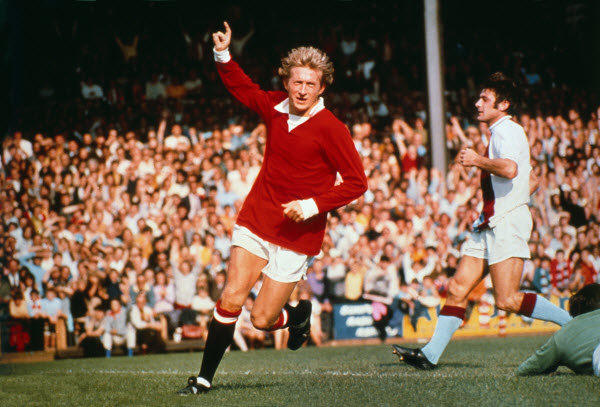
Law became part of United’s legendary ‘Holy Trinity’, along with Bobby Charlton and George Best. He remains Manchester United’s third-highest all-time goal scorer, behind only Wayne Rooney and Bobby Charlton. Denis Law is also the only man to have two statues dedicated to him at Old Trafford, one as an individual, and one dedicated to the United Trinity. After Tommy Docherty’s appointment as the new manager, and the departure of Charlton and Best, Law returned to Manchester City on a free transfer in July 1973. Before retiring, Law spent the final season of his career at City, famously scoring a back-heeled goal in the derby that saw Manchester United relegated from the top division in 1974.
This was his final touch in league football as Law asked to be substituted immediately after the goal. In both spells at City combined, Law made over 75 appearances, scoring 37 times. Ultimately, Law spent just two seasons at City, whereas he remains an all-time United legend and a favourite of many United fans to this day.
In addition to Kidd and Law, Peter Barnes and John Gidman played for both Manchester United and City in the post-war period, with both players transferred directly from United to City.
The Premier League Era
One surprising individual who played for both Manchester giants during the Premier League era is Danish goalkeeper, Peter Schmeichel. The Great Dane joined from Danish side Brøndby in August 1991. He went on to become one of United’s greatest ever keepers, making 367 appearances for the Red Devils. During his eight years at United, Schmeichel won five league titles, three FA Cups, one League Cup and the Champions League. He ended his United career by captaining the team to victory in the 1999 Champions League final against Bayern Munich, sealing United’s famous treble. After moves to Sporting CP and Aston Villa, Schmeichel joined City for the 2002/03 season. That season, Gary Neville famously ignored Schmeichel’s handshake in the tunnel before a derby fixture. Schmeichel spent the peak of his career at United, amassing numerous trophies and accolades, his time at City, in comparison, was a brief stint before the keeper’s retirement from football.
Like Schmeichel, Andy Cole also spent his peak years at Manchester United before a later spell at City towards the end of his career. Ferguson signed Cole in January 1995, from Newcastle United, for a then British record of £6.25 million. Cole had a hugely successful and prolific spell at United until 2001 and formed a lethal partnership with Dwight Yorke. Cole won five Premier League titles, two FA Cups and the Champions League with United and finished his time at the club with 121 goals in 275 appearances. After spells at Blackburn and Fulham, Andy Cole signed for Manchester City in 2005. He played just one season for City and finished as the club’s top scorer, scoring ten goals in 23 appearances. Cole remains the third-highest all-time top scorer in the Premier League with 187 goals, behind Alan Shearer and Wayne Rooney. Andy Cole is rightly remembered as one of the great Premier League strikers. The majority of his appearances, goals and trophies came for United, while his spell at City came towards the decline of his career.
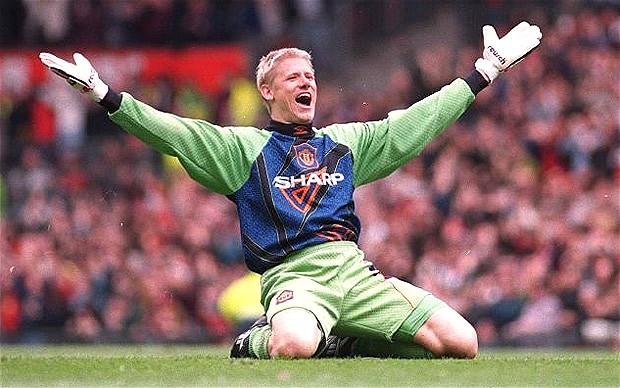
Both Schmeichel and Cole signed for Manchester City during the final years of their careers when they were past the peak of their powers. This was also a period where City were possibly not considered a genuine threat to United. Carlos Tevez is perhaps unique in the fact that he moved directly from United to City during the prime of his career, at a time where City were directly challenging their rivals for silverware. The Argentine striker signed for United from West Ham in 2007 and became part of an impressive attacking trio next to Wayne Rooney and Cristiano Ronaldo. In just two seasons at Old Trafford, Tevez won two Premier League titles, the Champions League and the Club World Cup Championship.
He finished his United career with 34 goals in 99 appearances. Tevez was the subject of a controversial and high-profile move to the Etihad in 2009, whereby he joined a growing Manchester City team. He continued to score and perform at City and, at the end of his first season, won the club’s Etihad Player of the Year and Players’ Player of the Year awards. Tevez scored 50 goals in his first 73 games, becoming the second-fastest player to reach this milestone in the club’s history. At City, Tevez won the FA Cup in 2011 as well as the Premier League in the 2011/12 season, the club’s first Premier League title. Tevez left City for Juventus in 2013, having scored 73 goals in 148 appearances for the club. The Argentine striker can boast an impressive goal-scoring record as well as the accolade of having won a Premier League title for both Manchester clubs, despite this, the controversial and often rebellious figure isn’t remembered particularly fondly by either set of fans.
The Premier League era has also seen the likes of Peter Beardsley, Mark Robins, Terry Cooke, Andrei Kanchelskis, Owen Hargreaves and Frédéric Veseli, play for both the red and blue of Manchester, arguably to a less impactful and significant level. Additionally, Abbie McManus and Jane Ross have played for both of the Manchester City and Manchester United women’s teams. In terms of managers, Ernest Mangnall, holds the impressive feat of being the only man to have managed both City and United. The great Manchester United manager Sir Matt Busby, who famously commanded the ‘Busby Babes’ and guided the Reds to European Cup glory in 1968, also had an impressive playing career. This included an eight-year spell with Manchester City between 1928 and 1936, where he played over 200 times and even won the FA Cup in 1934. Both Steve Coppell and Mark Hughes had opposite career trajectories to Sir Matt Busby, having spent time at United as players and then going on to manage City later in their careers.
As Manchester United and Manchester City continue to directly compete for trophies and titles, the number of players to represent both clubs has declined, often limited to players near to retirement, or academy players who are surplus to requirements. Following his transfer from Borussia Dortmund, former City academy star Jadon Sancho has returned to Manchester, but he will now be wearing red. Fans will be eager to see how he gets on this season, as the latest player to wear both the famous red and blue of Manchester. One former City academy player that could prove a point in the future is none other than Charlie McNeill who has been firing in the goals for both City and United’s academies.
Written by George Lavin
Discover more from MUFCLatest.com
Subscribe to get the latest posts sent to your email.


